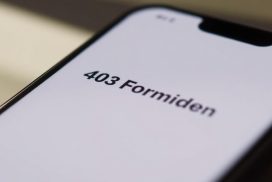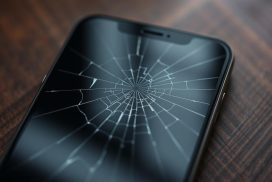Fixing Touchscreen Sensitivity on iPhone 11 Pro Max
If you own an iPhone 11 Pro Max and find yourself frustrated by touchscreen sensitivity issues, you’re not alone. Many users face challenges with the responsiveness of their device’s screen, which can hinder smooth navigation and lead to slower response times. However, there are solutions available to enhance the touchscreen sensitivity on your iPhone 11 Pro Max, allowing for a more enjoyable user experience.
Whether you have difficulties with hand tremors, dexterity, or fine motor control, adjusting the way your iPhone’s touchscreen responds to your gestures can make a significant difference. By fine-tuning the settings for taps, swipes, multiple touches, and touch-and-hold gestures, you can customize your device to suit your needs and preferences. This ensures that every interaction with your iPhone is tailored to provide smoother navigation and faster response times.
Furthermore, there are additional steps you can take to optimize your touchscreen’s performance. Disabling features like Tap to Wake and Shake to Undo can prevent accidental actions and alleviate sensitivity issues caused by unintentional touches or shakes. Additionally, clearing any obstructions on the screen, such as dust or low-quality screen protectors, and keeping it clean can help improve touchscreen sensitivity.
For more advanced troubleshooting, checking for software updates and performing a factory reset can resolve software-related problems that may impact touchscreen performance. If all else fails, contacting Apple Support or utilizing third-party recovery tools may provide further assistance in addressing any persistent sensitivity issues.
By employing these solutions, you can enhance the touchscreen sensitivity of your iPhone 11 Pro Max, ensuring a smoother navigation experience and faster response times. Take control of your device’s performance and enjoy the full potential of your iPhone 11 Pro Max.
Adjusting Taps, Swipes, and Multiple Touches
In the Accessibility settings of your iPhone, you have the ability to customize how the device responds to different touch gestures. By adjusting taps, swipes, and multiple touches, you can optimize the touchscreen sensitivity to suit your needs and preferences. Here are some settings you can modify:
-
Tap Duration: You can adjust the duration of taps on your iPhone. Increasing or decreasing the duration can help you find the right balance between sensitivity and accidental touches. Simply navigate to the Accessibility settings and modify the tap duration to your desired setting.
-
Swipe Movement: If you find that your iPhone is too sensitive to swipe gestures, you can increase the movement required to register a swipe. This can prevent inadvertent swipes and provide a more controlled navigation experience. Head to the Accessibility settings and make the necessary adjustments.
-
Multiple Touches: Some individuals may experience difficulties with performing multiple touches on the iPhone screen. To accommodate this, you can choose to treat multiple touches as a single touch. This setting enables you to interact with the screen using a single touch, making it easier to navigate through apps and perform various actions. Adjust this setting in the Accessibility menu to enhance your touchscreen experience.
-
First or Last Touch: By default, the iPhone responds to the last place you touch the screen. However, if you prefer the device to respond to the first place you touch, you can modify this setting. This can be particularly helpful in scenarios where accuracy is crucial, such as drawing or precise selections. Navigate to the Accessibility settings and choose whether you want the device to respond to the first or last touch.
Customizing these touch accommodations can significantly improve the experience of using your iPhone if you have specific touch-related challenges. By fine-tuning the taps, swipes, and multiple touches settings, you can optimize the touchscreen sensitivity and make interacting with your device more comfortable and efficient.
For visual learners, here’s a helpful table summarizing the various touch adjustments available:
| Setting | Description |
|---|---|
| Tap Duration | Adjusts the duration of taps on the screen |
| Swipe Movement | Increases the movement required for swipe gestures |
| Multiple Touches | Treats multiple touches as a single touch |
| First or Last Touch | Chooses to respond to the first or last place you touch |
Changing Touch-and-Hold Gesture Settings
If you struggle with touch-and-hold gestures on your iPhone, fret not. The Accessibility settings offer a solution to customize the touch duration and pressure sensitivity for a more tailored experience. By adjusting these settings, you can optimize the touch sensitivity for touch-and-hold gestures, ensuring smoother interactions with your device.
To access the touch-and-hold gesture settings, follow these steps:
- Navigate to the Settings app on your iPhone.
- Select Accessibility from the list of available options.
- Scroll down and tap on Touch.
- Next, choose the option for Touch Accommodations.
- In this menu, you’ll find the settings for touch-and-hold gestures.
Within the Touch Accommodations menu, you have the flexibility to adjust two key aspects:
- Touch Duration: This setting allows you to select between fast and slow touch duration. Choose the option that best suits your preference and comfort level.
- Pressure Sensitivity: If your iPhone supports Haptic Touch or 3D Touch, you’ll have the option to adjust the pressure sensitivity. Experiment with different levels to find the one that feels most comfortable to you.
Recommended Settings for Touch-and-Hold Gestures
While the ideal touch duration and pressure sensitivity can vary from person to person, here are some recommended settings to get you started:
| Gesture | Touch Duration | Pressure Sensitivity |
|---|---|---|
| Haptic Touch | Fast | Medium |
| 3D Touch | Slow | High |
Remember, these settings can be adjusted according to your personal preferences and needs. Take the time to explore different configurations until you find the right balance for your touch-and-hold gestures.
By customizing the touch-and-hold gesture settings on your iPhone, you can enhance your overall user experience and enjoy a more responsive touchscreen. Fine-tuning these settings empowers you to interact with your device more comfortably and efficiently.
Disabling Tap to Wake
If you find that accidental touches are waking your iPhone, you can easily turn off the Tap to Wake feature to prevent the screen from waking up unintentionally when touched. Follow the simple steps below to disable Tap to Wake on your iPhone:
- Open the Settings app on your iPhone.
- Scroll down and tap on “Accessibility”.
- In the Accessibility menu, select “Touch”.
- Scroll down to find the “Tap to Wake” option and toggle it off.
By turning off Tap to Wake, you can eliminate the inconvenience of your iPhone waking up when you don’t intend it to, ensuring a smoother user experience. Stay in control of your device and prevent accidental wake-ups with this simple adjustment.
If you prefer visual instructions, here’s a step-by-step guide with screenshots:
| Step | Instruction | Screenshot |
|---|---|---|
| 1 | Open the Settings app on your iPhone. | |
| 2 | Scroll down and tap on “Accessibility”. | |
| 3 | In the Accessibility menu, select “Touch”. | |
| 4 | Scroll down to find the “Tap to Wake” option and toggle it off. |
By following these steps, you can easily disable Tap to Wake and regain control over the screen wake functionality on your iPhone.
Deactivating Shake to Undo
If you find yourself unintentionally triggering the Shake to Undo feature on your iPhone, you can easily turn it off. By disabling Shake to Undo in the Accessibility settings, you can prevent any accidental actions from being undone with a simple shake.
To turn off Shake to Undo on your iPhone:
- Open the Settings app on your device.
- Scroll down and tap on Accessibility.
- Under the Physical and Motor section, tap on Touch.
- Scroll down to find the Shake to Undo option.
- Toggle the switch to off to disable Shake to Undo.
Once disabled, you can breathe easy knowing that your unintentional phone movements will no longer trigger the Shake to Undo feature, providing a more stable and controlled user experience.
Remember, by customizing the touch settings, you can enhance your iPhone’s touchscreen sensitivity and ensure a smoother navigation experience. In addition to turning off Shake to Undo, adjusting taps, swipes, and multiple touches, as well as touch-and-hold gestures, can also help you optimize your device for your specific needs.
“Turning off Shake to Undo is a great way to minimize accidental actions on your iPhone and maintain control over your device.” – Apple Support
| Benefits of Deactivating Shake to Undo | How to Turn Off Shake to Undo |
|---|---|
| Prevents accidental actions from being undone | Open Settings > Accessibility > Touch > Toggle Shake to Undo off |
| Reduces frustration caused by unintentional shakes | Disable Shake to Undo for a more stable user experience |
| Ensures greater control over your iPhone | Customize touch settings to suit your needs |
Clearing Obstructions and Cleaning the Screen
Sometimes, the sensitivity of the iPhone screen can be affected by obstructions such as dust or a low-quality screen protector. These obstructions can hinder the touch response and cause screen sensitivity issues. To ensure optimal performance, it is recommended to remove the screen protector and clean the screen regularly.
Firstly, if you have a screen protector on your iPhone, removing it can significantly improve touchscreen sensitivity. Screen protectors, especially low-quality ones, can create a barrier between your finger and the display, reducing the responsiveness. By removing the screen protector, you eliminate any potential obstructions and restore the natural touch experience.
Once the screen protector is removed, it’s important to clean the iPhone screen properly. Dust, fingerprints, and smudges can accumulate on the screen’s surface over time, affecting its sensitivity. To clean your iPhone screen:
- Gently wipe the screen with a lint-free cloth to remove any loose dust or particles. Avoid using abrasive materials that could scratch the screen.
- Dampen the cloth with an alcohol-free cleaning solution specifically designed for electronics. Avoid using products containing alcohol, as they can damage the screen. Ensure the cloth is not dripping wet, as excess moisture can seep into the device.
- Wipe the screen using gentle, circular motions, applying slight pressure to remove fingerprints and smudges. Be careful not to press too hard, as excessive pressure can damage the screen.
- Dry the screen thoroughly with a clean, lint-free cloth to remove any remaining moisture.
Cleaning the screen regularly and keeping it free from obstructions can help improve touchscreen sensitivity, ensuring a smoother and more responsive user experience.
Tip: It’s recommended to clean your iPhone screen at least once a week, or more frequently if you notice any significant decrease in touchscreen sensitivity.
Software Updates and Factory Reset
One of the first steps to take when experiencing touchscreen sensitivity problems on your iPhone is to check for software updates. Updating your iPhone’s software can address any software-related issues that may be affecting the screen’s responsiveness. To update your iPhone software, follow these steps:
- Connect your iPhone to a stable Wi-Fi network.
- Go to the Settings app on your iPhone.
- Scroll down and tap on “General”.
- Select “Software Update”.
- If an update is available, tap on “Download and Install”.
If your screen sensitivity issues persist even after updating the software, you can consider performing a factory reset. This will restore your iPhone to its original settings and may help resolve any persistent touchscreen sensitivity problems. However, it’s important to note that a factory reset will erase all data on your iPhone, so be sure to back up your important information beforehand. To perform a factory reset, follow these steps:
- Ensure your iPhone is backed up to iCloud or iTunes.
- Go to the Settings app on your iPhone.
- Scroll down and tap on “General”.
- Select “Reset”.
- Tap on “Erase All Content and Settings”.
- Confirm the reset by entering your passcode and Apple ID password.
After the factory reset is complete, you can restore your data from the backup you created earlier.
Regularly updating your iPhone software and considering a factory reset as a last resort can help you address touchscreen sensitivity issues effectively. In the next section, we’ll explore additional tips for maintaining a high level of touchscreen sensitivity on your iPhone 11 Pro Max.
Conclusion
By adjusting the touchscreen settings, clearing obstructions, and keeping the screen clean, you can enhance the touchscreen sensitivity on your iPhone 11 Pro Max. If you have difficulties with hand tremors or fine motor control, you can customize how the iPhone responds to tap, swipe, and touch-and-hold gestures in the Accessibility settings. Additionally, disabling features like Tap to Wake and Shake to Undo can prevent unintentional screen interactions that may affect sensitivity.
Regularly checking for software updates is crucial, as these updates often include bug fixes and performance improvements that can resolve sensitivity issues. If you have tried all the troubleshooting methods and still encounter problems, contacting Apple Support or using third-party recovery tools may offer further assistance.
With these solutions and adjustments, you can enjoy a smoother navigation experience and faster response times on your iPhone 11 Pro Max, allowing you to fully utilize its advanced touchscreen capabilities.
FAQ
How can I fix the touchscreen sensitivity on my iPhone 11 Pro Max?
If you have difficulties with hand tremors, dexterity, or fine motor control, you can adjust the iPhone touchscreen settings to enhance touchscreen sensitivity. You can change settings for taps, swipes, multiple touches, and touch-and-hold gestures to customize how the iPhone responds to different touch actions.
How can I adjust taps, swipes, and multiple touches on my iPhone 11 Pro Max?
In the Accessibility settings, you can modify the duration of taps, increase the movement required for swipe gestures, and treat multiple touches as a single touch. These settings allow you to personalize the iPhone’s response to taps, swipes, and multiple touches.
How do I change touch-and-hold gesture settings on my iPhone 11 Pro Max?
In the Accessibility settings, you can adjust the touch duration and pressure sensitivity for touch-and-hold gestures. You can choose between fast or slow touch duration and customize the pressure needed for touch-and-hold gestures to suit your needs.
Can I disable Tap to Wake on my iPhone 11 Pro Max?
Yes, you can easily turn off the Tap to Wake feature in the Accessibility settings. By disabling Tap to Wake, you prevent the screen from waking up when you accidentally touch it, reducing any unintentional actions.
How can I deactivate Shake to Undo on my iPhone 11 Pro Max?
In the Accessibility settings, you can disable the Shake to Undo feature. By turning it off, you prevent any unintentional actions from being undone with a shake of your iPhone.
What can I do if my iPhone 11 Pro Max screen sensitivity is affected by obstructions?
If dust or a low-quality screen protector is obstructing the screen, it is recommended to remove the screen protector and clean the screen with an alcohol-free fluid and a lint-free cloth. Keeping the screen clean and dry can help improve touchscreen sensitivity.
Should I check for software updates to fix touchscreen sensitivity issues on my iPhone 11 Pro Max?
Yes, checking for software updates on your iPhone can help resolve software-related issues that may be causing touchscreen sensitivity problems. Updating your device’s software may provide a solution to any sensitivity issues.
What can I do if none of the above solutions fix the touchscreen sensitivity on my iPhone 11 Pro Max?
If all else fails, performing a factory reset on your iPhone can help reset all settings and potentially fix any persistent touchscreen sensitivity issues. If you are still experiencing problems, contacting Apple Support or using third-party recovery tools may provide further assistance.












